Vorstikestad: ülevaade
Vorstikestad mängivad vorsti valmistamise protsessis kriitilist rolli, pakkudes täidise ümber kaitsekihi. Neid on erinevat tüüpi, millest igaühel on oma omadused ja rakendused:
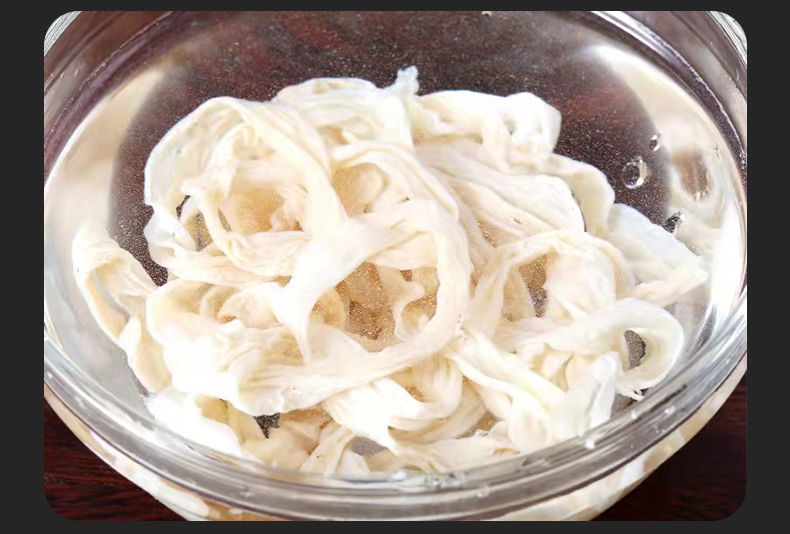
Vorstikestade tüübid
Looduslikud kestad
Looduslikud sooled saadakse looma soolestikust, näiteks sigade, lammaste või lehmade sooltest. Neid hinnatakse kõrgelt traditsioonilise maitse ja tekstuuri poolest, pakkudes ehedat vorstielamust. Need korpused on:
- Tekstuur ja maitse: Need pakuvad ainulaadset suus tunnet ja maitset, mida paljud tarbijad käsitööliste ja traditsiooniliste vorstide puhul hindavad.
- Elastsus: Nende loomulik elastsus võimaldab neil koos vorstitäidisega venida ja kahaneda, säilitades ühtlase kuju ja tekstuuri.
- Autentsus: Paljud traditsioonilised vorstiretseptid ja -kultuurid eelistavad looduslikke kestasid nende ajaloolise ja kultuurilise tähtsuse tõttu, mis suurendab toote üldist autentsust.
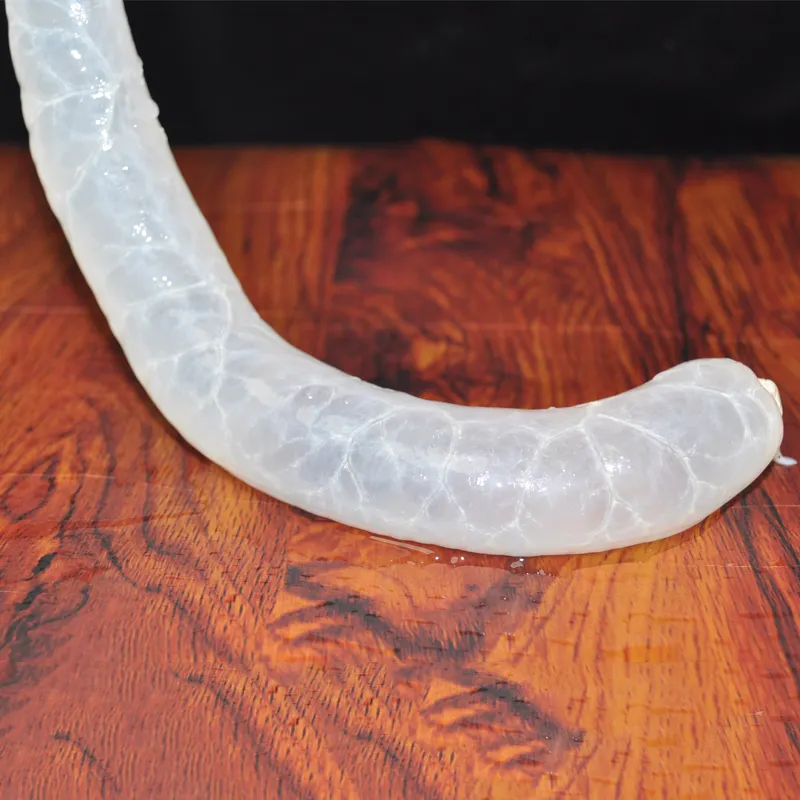
Kollageenikestad
Kollageenikestad on saadud loomade nahkades ja luudes leiduvast kollageenist. Neid eelistatakse nende ühtluse ja konsistentsi tõttu, mistõttu need sobivad suuremahuliseks tootmiseks. Kollageenikestade eeliste hulka kuuluvad:
- Ühtlane läbimõõt: Need pakuvad ühtlast suurust ja kuju, mis on masstoodanguna valmistatud vorstide ühtlaseks küpsetamiseks ja esitlemiseks hädavajalikud.
- Ühtlane jõudlus: Tuntud oma usaldusväärse jõudluse poolest nii värske kui ka keeduvorsti tootmisel, tagades prognoositava kvaliteedi.
- Ökonoomne: Üldiselt soodsamad kui looduslikud kestad, mistõttu on need suuremahuliseks tootmiseks kuluefektiivsed valikud.
Sünteetilised kestad
Sünteetilisi kestasid, mis koosnevad sellistest materjalidest nagu tselluloos või plast, eelistatakse nende vastupidavuse, käsitsemise lihtsuse ja mitmekülgsuse tõttu erinevates suurustes ja kujudes. Neid kasutatakse peamiselt tööstuslikus vorstitootmises järgmistel põhjustel:
- Tugevus ja vastupidavus: Need kestad on vastupidavad töötlemise ajal purunemisele või lõhenemisele, mistõttu sobivad need ideaalselt suuremahuliseks tootmiseks.
- Mitmekülgsus: Neid saab toota väga erineva suuruse ja kujuga, et rahuldada erinevaid vorstitüüpe ja tootmisvajadusi.
- Käsitsemise lihtsus: Sünteetilisi kestasid on lihtsam käsitseda ja töödelda võrreldes looduslike kestadega, mis võib tootmist sujuvamaks muuta ja tööjõukulusid vähendada.
Iga tüüpi vorstikest täidab kindlat eesmärki ja valitakse soovitud omaduste ja tootmisnõuete alusel. Olenemata sellest, kas tegemist on traditsioonilise maitse, ühtluse või tööstusliku tõhususega, võib õige ümbris lõpptoodet muuta.
-
Kõrge täpsusega automaatne vorsti vaakumtäitmismasin
-
Kaubanduslik vorsti vaakumtäite valmistamise masin
-
Hüdrauliline vertikaalne vorstitäidis
-
Automaatne vorstitäite- ja linkerisüsteem
-
Pidev vaakumvorstitäidis
-
Vaakumvorsti masin
-
10L-25L elektriline vorstitäidis/täiteaine
-
Elektriline vorstitäidis Stuffer masinate tarnijad
-
Müüa kaubanduslik automaatne hüdrauliline vorstimasin


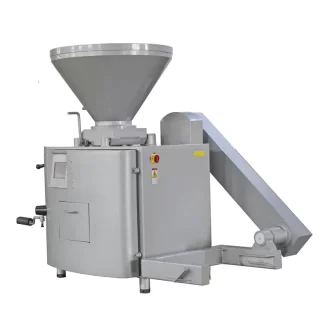
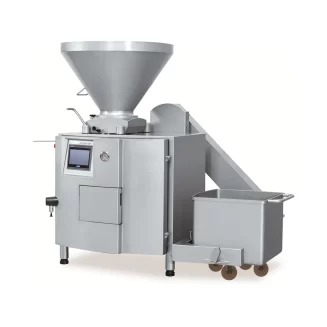
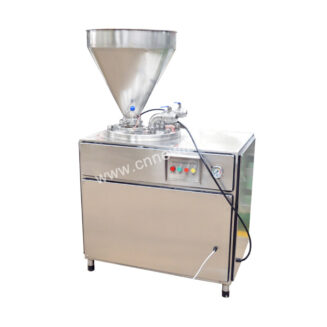
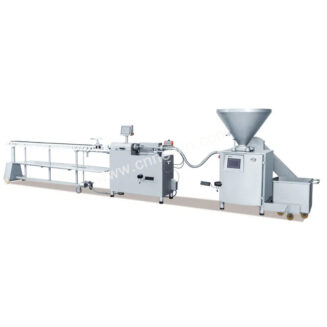
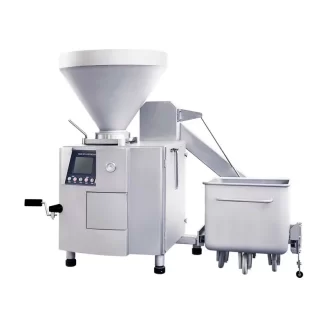
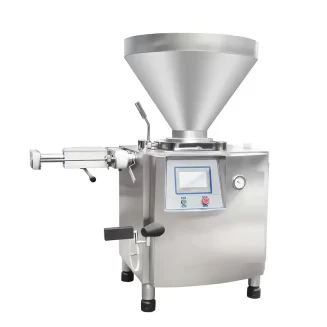
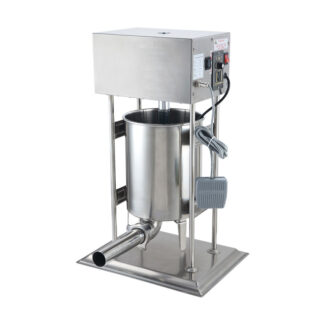
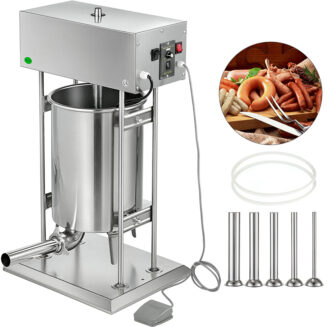
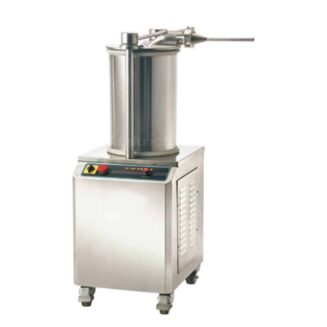
Lihalõikurid
14-tolline elektriline roostevabast terasest poolautomaatne lihalõikusmasin 360T
Lihalõikurid
12-tolline elektriline roostevabast terasest poolautomaatne lihalõikur 300T
Lihalõikurid
10-tolline köögitööriist Elektriline poolautomaatne viilutaja 250T
Lihalõikurid
8-tolline poolautomaatne lihalõikur 220T
Lihalõikurid
13-tolline tipptasemel täisautomaatne veiseliha viilutamismasin 320KRS
Lihalõikurid
12-tolline täisautomaatne lihalõikusmasin 300KRS
Lihalõikur
304 Roostevabast terasest lihalõikur QE 500kg/H
Lihalõikurid
13″ lauapealsed külmutatud lihalõikurid 320KF
Lihalõikurid
12-tolline lauapealne külmutatud lihalõikur 300KF
Lihalõikurid
Müüa 14-tolline automaatne lihalõikur 360KTS
Lihalõikurid
13-tolline kaubanduslik automaatne lihalõikur 320KTS
Lihalõikurid
12-tollise elektrilise lihalõikuri tarnija 300KTS